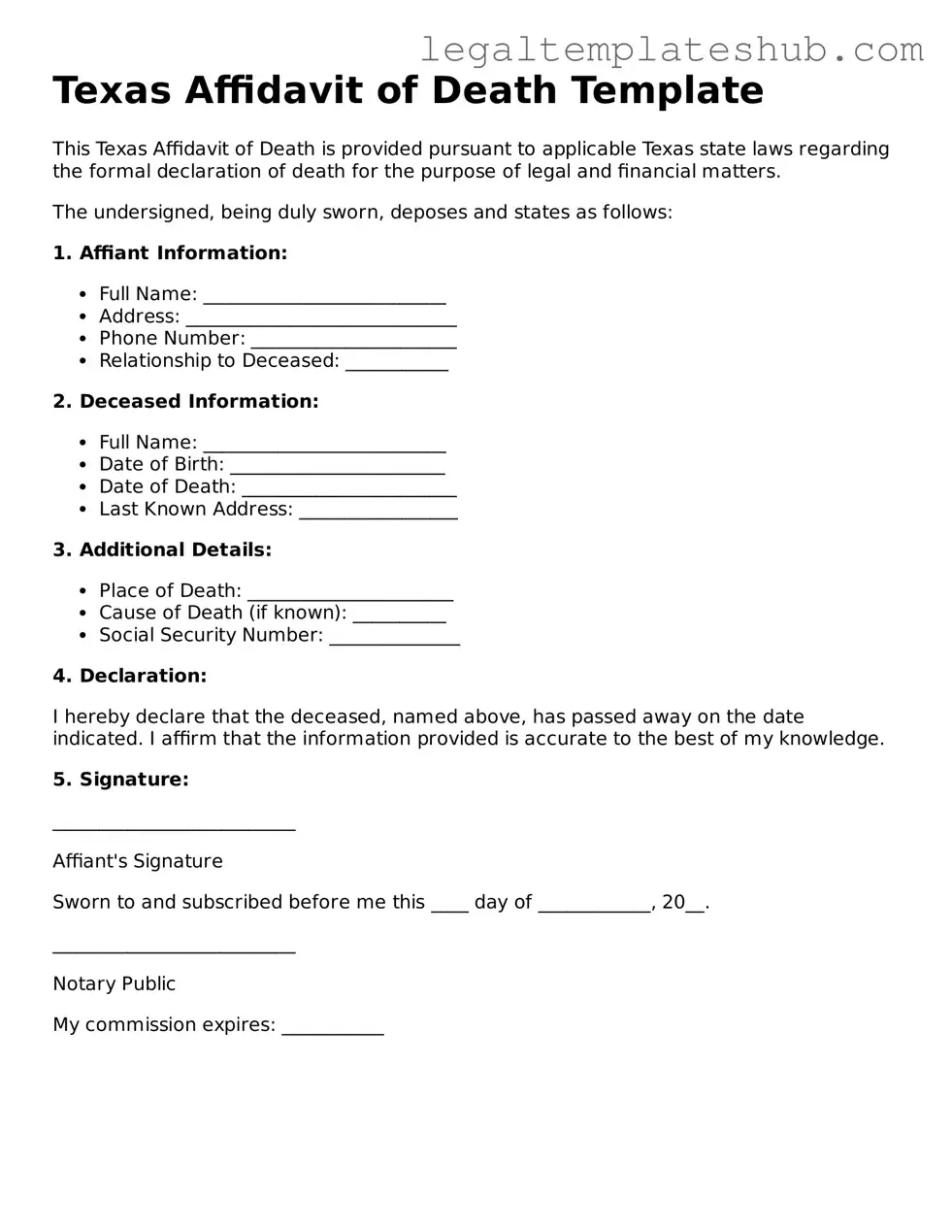Printable Affidavit of Death Document for Texas
The Texas Affidavit of Death form is a legal document used to officially declare an individual's death. This form serves as a vital record for various legal and administrative purposes, helping to settle estates and manage assets. If you need to fill out this form, please click the button below.
Access Editor
